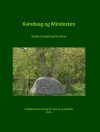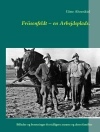This edited collection investigates the human dimension of urban renewal, using a range of case studies from Africa, Asia, Europe, India and North America, to explore how the conception and delivery of regeneration initiatives can strengthen or undermine local communities.
Ultimately aiming to understand how urban residents can successfully influence or manage change in their own communities, contributing authors interrogate the complex relationships between policy, planning, economic development, governance systems, history and urban morphology. Alongside more conventional methods, analytical approaches include built form analysis, participant observation, photographic analysis and urban labs.
Appealing to upper level undergraduate and masters’ students, academics and others involved in urban renewal, the book offers a rich combination of theoretical insight and empirical analysis, contributing to literature on gentrification, the right to the city, and community participation in neighbourhood change.
Cuprins
Foreword.- Introduction.- Chapter 1 Gentrification and displacement.- Chapter 2 London’s Railway Neighbourhoods.- Chapter 3 Community perceptions of Urban Regeneration.- Chapter 4 Market modernization and the sense of place lost in transformation.- Chapter 5 New East Manchester? Historicizing health, wellness, and the working class body to resist gentrification.- Chapter 6 Developing A Community Land Trust for The Right To The City.- Chapter 7 Participatory Citymaking.- Chapter 8 A Tale of Two Neighbourhoods in Hong Kong.- Chapter 9 Citizen Participation and Public Funding in Ohio.- Chapter 10 Community led Social Housing Regeneration.- Chapter 11 The need for holistic community development in sites of neighbourhood change.- Chapter 12 How NGO’s help Haitians find a Sense of Community.- Chapter 13 Colonial Heritage Conservation in Contemporary Qindao, China (Xiaolin Zang).- Chapter 14 Urban Labs as a new form of Participation and Governance.- Conclusion and Directions for Future Research.












